Genetic Algorithm-Based Intelligent Selection Method of Universal Shield Segment Assembly Points
Abstract
:1. Introduction
2. Establishment of Assembly Point Selection Objective Function
2.1. Related Concepts
2.1.1. Overview of Segment Assembly
2.1.2. Universal Shield Segment and Its Assembly Point
2.2. Optimization Objectives of Assembly Point Selection
2.2.1. Thrust Cylinder Stroke Difference
2.2.2. Shield Tail Gap Difference
2.3. Assembly Point Selection Objective Function
3. The Example Dataset Generation
3.1. Generation of Shield Machine and Previous Segment Ring Location
3.2. The Calculation of Thrust Cylinder Stroke
3.3. The Calculation of Shield Tail Gap
3.4. Simulation Data Processing
- (1)
- Adding noise to simulation data: Because the measurement precision of both the thrust cylinder stroke measurement sensors and the shield tail gap measurement sensors in construction is 1 mm, random errors are added in the form of Gaussian noise on and , respectively, in which .
- (2)
- Calculation and screening of WCPs: , , and are calculated from and . In addition, the range of values of WCPs is determined through engineering experience, as shown in Equation (23):retaining the set of WCPs that simultaneously satisfy Equation (23). In addition, it should be noted that the previous segment assembly point has been determined when generating the previous segment ring location in Section 3.1; so a set of sample data (, , , , ) can be obtained.
3.5. Data Labeling and Expansion
4. Genetic Algorithm-Based Weights Optimization
4.1. Divide the Working Condition into Intervals
4.2. Genetic Algorithm Design
4.2.1. Chromosome Encoding
4.2.2. Genetic Operations
- (a)
- Selection: According to the fitness value, chromosomes are selected by the Roulette Wheel Selection. In addition, the elite retention strategy is used to add the best chromosome from the previous population to the next, to protect the optimal chromosome structure and improve the convergence of the algorithm.
- (b)
- Crossover: A crossover operation is to simulate a genetic recombination in biological genetic and evolutionary processes. A single-point crossover is used to randomly select a crossover point and swap the genes behind the crossover point to form two new chromosomes. Whether the crossover operation is executed or not is determined by the crossover probability .
- (c)
- Mutation: The mutation operation is performed to maintain the diversity of the population and prevent the problem from falling into local convergence. For the selected chromosomes, a mutation point is randomly selected, and the genes at the mutation point are converted between zero and one according to the mutation probability .
4.2.3. Fitness Value
4.2.4. Operation Process of the Genetic Algorithm
- Select chromosomes based on the fitness value using Roulette Wheel Selection.
- Randomly select two parent chromosomes to perform one-point crossover with probability .
- Randomly select a point to perform a one-point mutation with probability .
- Keep the best chromosome (the elite) of the previous population to the next, and a new population containing chromosomes is obtained.
5. Results and Discussion
5.1. Weights Optimization and Validation
5.2. Site Applications
6. Conclusions
- To establish the intelligent selection method of assembly points, the factors influencing the selection of the assembly points were analyzed, and an objective function for the selection of the universal shield segment assembly point was designed. The working conditions were divided into 81 intervals, and the genetic algorithm was used to optimize the weights of the objective function.
- Because it is difficult to obtain sufficient example data to optimize the weights, this paper also proposed a calculation method of WCPs based on homogeneous coordinate transformation and spatial analytic geometry methods. The Monte Carlo method is used to generate any required amount of data.
- The genetic algorithm obtained 92.6% accuracy on the training set when optimizing the weights. The genetic algorithm assigned larger weights to worse WCPs, reflecting the tendency to adjust the worse parameters as much as possible, and overall assigned larger weights to the shield tail gap, reflecting the tendency to preferentially adjust the shield tail gap. Moreover, the preference is more obvious when the shield tail gap is poor.
- The results on the test data show that the proposed method of assembly point selection can reach a 90.1% correct rate. In addition, the intelligent selection method of assembly point was applied on Line 8 of the Zhengzhou rail transit in China, and the correct rate of assembly points selection reached 90.6%, which is 12.5% higher than the correct rate of actual assembly point selection in the site, indicating that the proposed method has higher accuracy than the actual assembly point selection on site.
Author Contributions
Funding
Institutional Review Board Statement
Informed Consent Statement
Data Availability Statement
Conflicts of Interest
References
- Shen, S.L.; Xu, Y.S. Numerical evaluation of land subsidence induced by groundwater pumping in Shanghai. Can. Geotech. J. 2011, 48, 1378–1392. [Google Scholar] [CrossRef]
- Su, W.L.; Li, X.G.; Jin, D.L.; Yang, Y.; Qin, R.C.; Wang, X.Y. Analysis and prediction of TBM disc cutter wear when tunneling in hard rock strata: A case study of a metro tunnel excavation in Shenzhen, China. Wear 2020, 446, 203190. [Google Scholar] [CrossRef]
- Yagiz, S. Utilizing rock mass properties for predicting TBM performance in hard rock condition. Tunn. Undergr. Space Technol. 2008, 23, 326–339. [Google Scholar] [CrossRef]
- Yang, F.J.; Zhou, H.; Zhang, C.Q.; Lu, J.J.; Lu, X.J.; Geng, Y.J. An analysis method for evaluating the safety of pressure water conveyance tunnel in argillaceous sandstone under water-weakening conditions. Tunn. Undergr. Space Technol. 2020, 97, 103264. [Google Scholar] [CrossRef]
- Ye, F.; Qin, N.; Liang, X.; Ouyang, A.H.; Qin, Z.; Su, E.J. Analyses of the defects in highway tunnels in China. Tunn. Undergr. Space Technol. 2021, 107, 103658. [Google Scholar] [CrossRef]
- Zhang, J.W.; Lin, Y.; Chen, Y.Y.; Li, X. Deformation Behavior of Shield Segment Joint Controlled by Bolt and Positioning Tenon. Arab. J. Sci. Eng. 2021, 46, 11241–11251. [Google Scholar] [CrossRef]
- Nie, H.B.; Gu, S.C. Ultimate Bearing Capacity Analysis of CFRP-Strengthened Shield Segments Using Bonding Slip Behavior Experiments. Materials 2020, 13, 4200. [Google Scholar] [CrossRef]
- Zhang, J.W.; Guo, S.C.; Chen, Y.Y. Mechanical behavior of sealed waterproof for shield tunnel segment joint under different assembling ellipticity. Sci. Prog. 2021, 104, 0036850420987044. [Google Scholar] [CrossRef]
- Zhang, W.J.; Koizumi, A. Behavior of composite segment for shield tunnel. Tunn. Undergr. Space Technol. 2010, 25, 325–332. [Google Scholar] [CrossRef]
- Wang, S.M.; Wang, X.M.; Chen, B.; Fu, Y.B.; Jian, Y.Q.; Lu, X.X. Critical state analysis of instability of shield tunnel segment lining. Tunn. Undergr. Space Technol. 2020, 96, 103180. [Google Scholar] [CrossRef]
- Jin, H.; Su, J.; Zhao, C. Relationship between Invert-Filling Disengaging and Deformation of Shield Tunnel Using Staggered Assembled Segment. Ksce J. Civ. Eng. 2022, 26, 1966–1977. [Google Scholar] [CrossRef]
- Luo, H.B.; Li, L.H.; Chen, K. Parametric modeling for detailed typesetting and deviation correction in shield tunneling construction. Autom. Constr. 2022, 134, 101006. [Google Scholar] [CrossRef]
- Wu, C.; Liu, X.J.; Wang, L.P.; Wang, J.S. Dimension optimization of an orientation fine-tuning manipulator for segment assembly robots in shield tunneling machines. Autom. Constr. 2011, 20, 353–359. [Google Scholar] [CrossRef]
- Thomas, K.; Günther, M. A numerical study of the effect of soil and grout material properties and cover depth in shield tunnelling. Comput. Geotech. 2006, 33, 234–247. [Google Scholar]
- Tomasz, M.; Damian, B.; Joanna, N. Seismic vulnerability of a soil-steel composite tunnel—Norway Tolpinrud Railway Tunnel Case Study. Tunn. Undergr. Space Technol. 2021, 110, 103808. [Google Scholar] [CrossRef]
- Zhu, X.; Bao, T.F.; Yu, H.; Zhao, J.L. Utilizing Building Information Modeling and Visual Programming for Segment Design and Composition. J. Comput. Civ. Eng. 2020, 34, 04020024. [Google Scholar] [CrossRef]
- Zhou, Y.; Wang, Y.; Ding, L.Y.; Love, P.E.D. Utilizing IFC for shield segment assembly in underground tunneling. Autom. Constr. 2018, 93, 178–191. [Google Scholar] [CrossRef]
- Hu, M.; Wu, F.F. Improved multi-classes SVM and application in ring-key position selection in tunnels. In Proceedings of the International Conference on Machine Learning and Cybernetics, Baoding, China, 12–15 July 2009. [Google Scholar]
- Song, R.H. Development of Software for Composition and Dynamic Deviation Correction of Universal Segments for Shield Tunnel. Master’s Thesis, Shanghai Jiao Tong University, Shanghai, China, 2008. [Google Scholar]
- Hu, C.M.; Zhang, W.C.; Mei, Y.; Lu, Z.Y. Calculation of jack stroke difference range and advancing control of shield machine under known point position of universal ring segment. China Railw. Sci. 2015, 36, 51–57. (In Chinese) [Google Scholar]
- Liu, F.H. Study on the Composition and Ring Selection Technology of Universal Segment for Shield-Driven Tunnels. Master’s Thesis, Tongji University, Shanghai, China, 2007. [Google Scholar]
- Zhang, W.C.; Zhang, J.; Yan, J.R.; Zhu, Y.H. Selection of the Key Segment Position for Trapezoidal Tapered Rings and Calculation of the Range of Jack Stroke Differences with a Predetermined Key Segment Position. Adv. Civ. Eng. 2021, 2021, 3606389. [Google Scholar] [CrossRef]
- Miao, L. Design and Implementation of Dynamic Layout Algorithm FOR general Wedge Segment of Tunnel. Master’s Thesis, Shijiazhuang Tiedao University, Shijiazhuang, China, 2020. [Google Scholar] [CrossRef]
- Zhao, W.B.; Li, Z.C.; Zhang, X.R. Research on Adaptive Segment Selection Algorithm Based on Three Axis Fitting. J. Inf. Eng. Univ. 2017, 18, 379–384. (In Chinese) [Google Scholar]
- Khan, S.A.; Mahmood, A. Fuzzy goal programming-based ant colony optimization algorithm for multi-objective topology design of distributed local area networks. Neural Comput. Appl. 2019, 31, 2329–2347. [Google Scholar] [CrossRef]
- Zhong, Y.G.; Ai, B. A modified ant colony optimization algorithm for multi-objective assembly line balancing. Soft Comput. 2017, 21, 6881–6894. [Google Scholar] [CrossRef]
- Hasanoglu, M.S.; Dolen, M. Multi-objective feasibility enhanced particle swarm optimization. Eng. Optim. 2018, 50, 2013–2037. [Google Scholar] [CrossRef]
- Tao, G.W.; Feng, J.C.; Feng, H.B.; Feng, H.; Zhang, K. Reducing Construction Dust Pollution by Planning Construction Site Layout. Buildings 2022, 12, 531. [Google Scholar] [CrossRef]
- Wang, X.Y.; Zhu, S.J.; Zeng, Q.; Guo, X.N. Improved multi-objective Hybrid Genetic Algorithm for Shape and Size Optimization of Free-form latticed structures. J. Build. Eng. 2021, 43, 102902. [Google Scholar] [CrossRef]
- Elshafei, G.; Vilcekova, S.; Zelenakova, M.; Negm, A.M. An Extensive Study for a Wide Utilization of Green Architecture Parameters in Built Environment Based on Genetic Schemes. Buildings 2021, 11, 507. [Google Scholar] [CrossRef]
- Seong, N.C.; Kim, J.H.; Choi, W. Adjustment of Multiple Variables for Optimal Control of Building Energy Performance via a Genetic Algorithm. Buildings 2020, 10, 195. [Google Scholar] [CrossRef]
- Stamoulis, M.N.; dos Santos, G.H.; Lenz, W.B.; Tusset, A.M. Genetic Algorithm Applied to Multi-Criteria Selection of Thermal Insulation on Industrial Shed Roof. Buildings 2019, 9, 238. [Google Scholar] [CrossRef] [Green Version]
- Yan, J.R.; Zhang, W.C. Study on the calculation of position selection of universal ring segment in shield tunneling construction. Chin. J. Undergr. Space Eng. 2019, 15, 577–582. (In Chinese) [Google Scholar]
- Pazooki, M.; Mazinan, A.H. Hybrid fuzzy-based sliding-mode control approach, optimized by genetic algorithm for quadrotor unmanned aerial vehicles. Complex Intell. Syst. 2018, 4, 79–93. [Google Scholar] [CrossRef] [Green Version]
- Kwon, N.; Song, K.; Ahn, Y.; Park, M.; Jang, Y.J. Maintenance cost prediction for aging residential buildings based on case-based reasoning and genetic algorithm. J. Build. Eng. 2020, 28, 101006. [Google Scholar] [CrossRef]
- Lei, Y.J.; Zhang, S.W. Matlab Genetic Algorithm Toolbox and Applications, 3rd ed.; Xidian University Press: Xi’an, China, 2014; pp. 43–59. [Google Scholar]
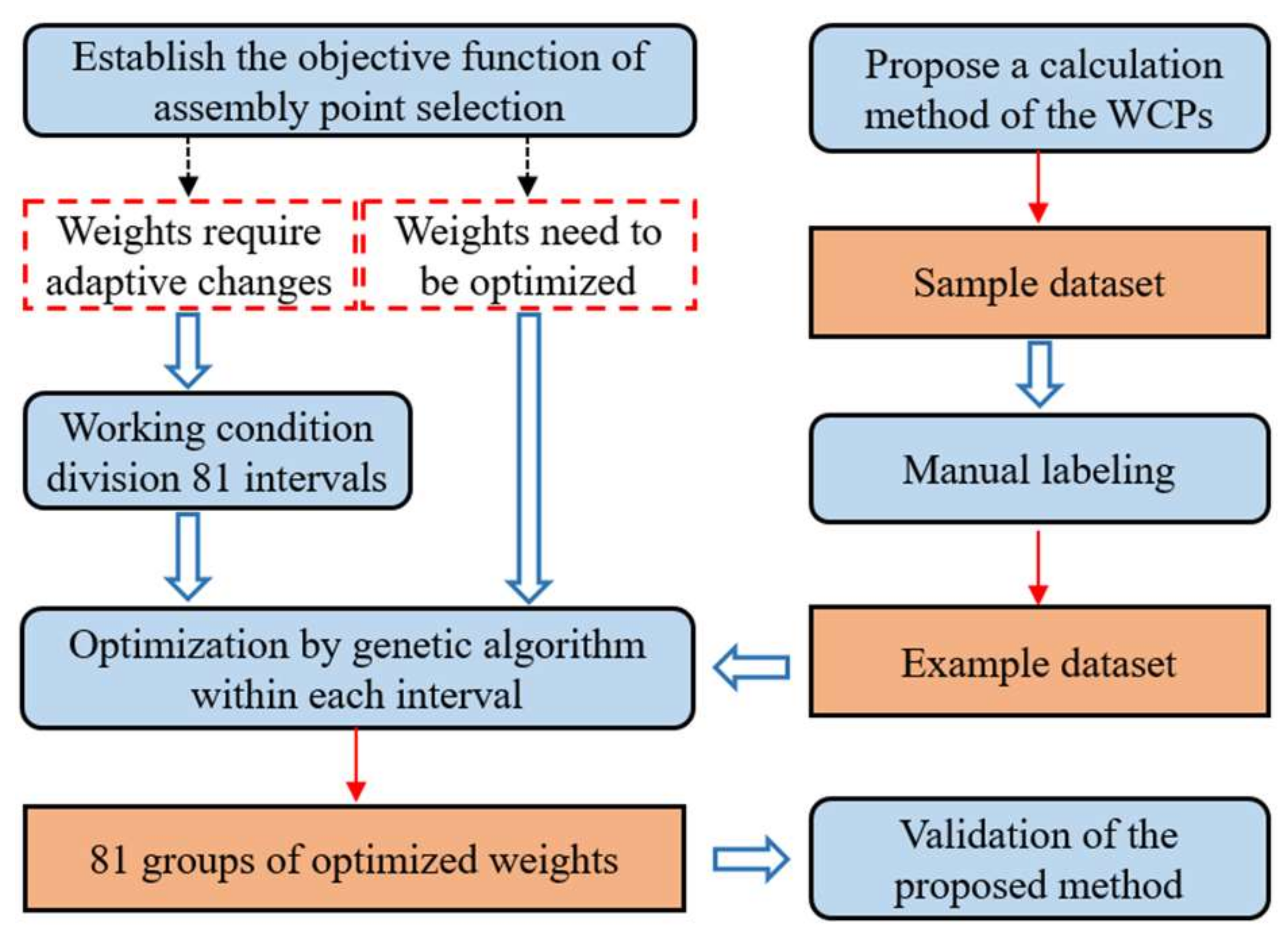
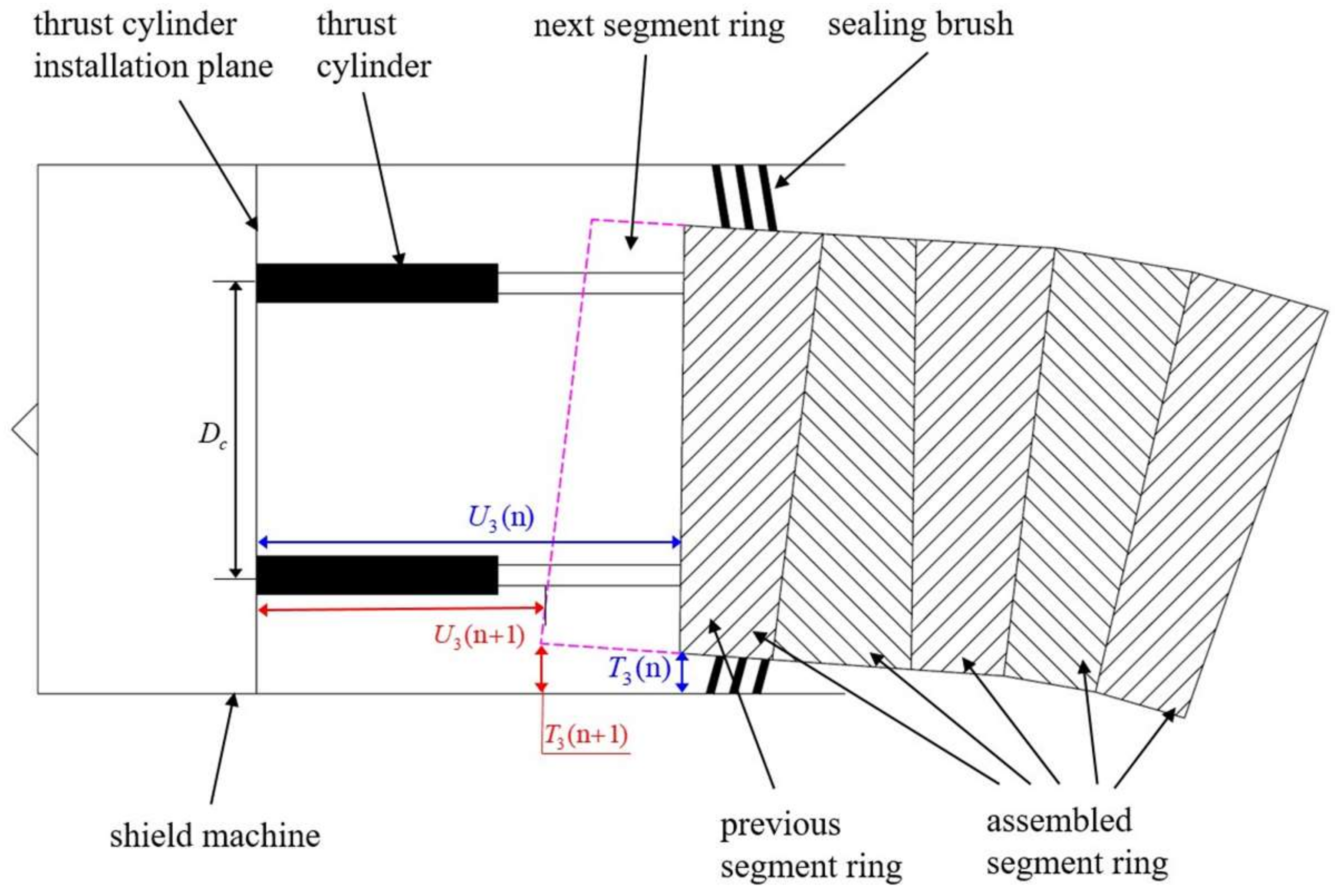
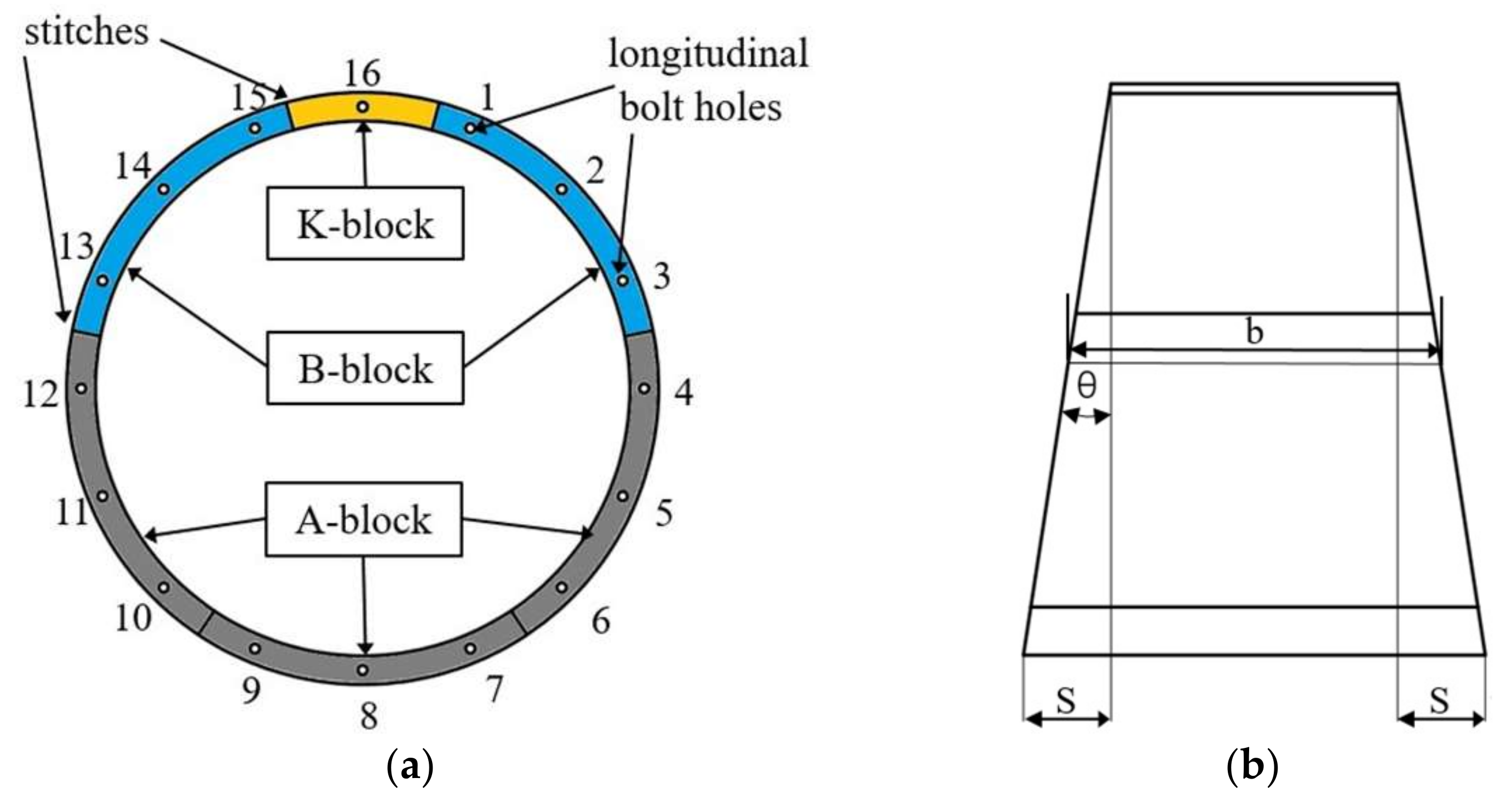
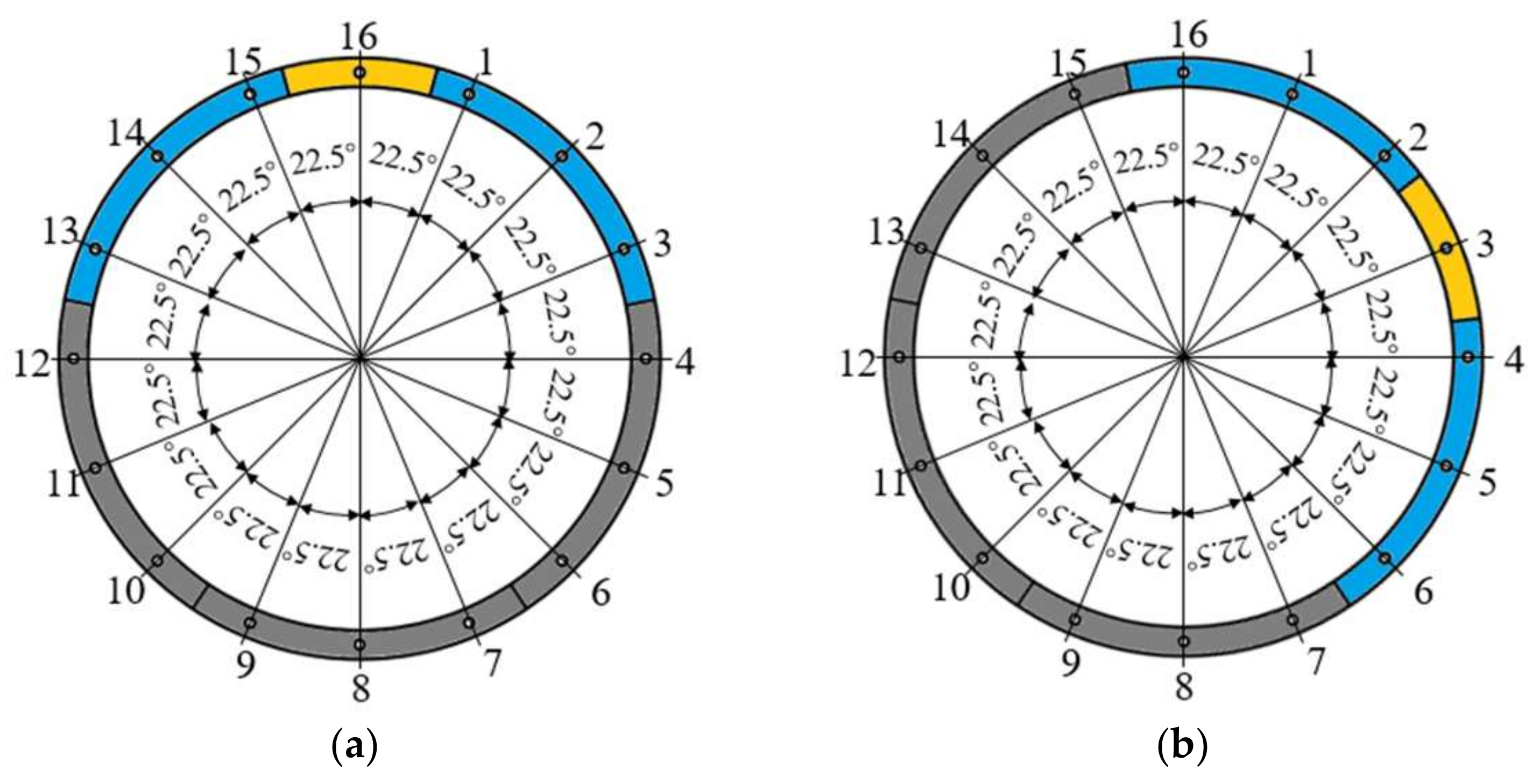
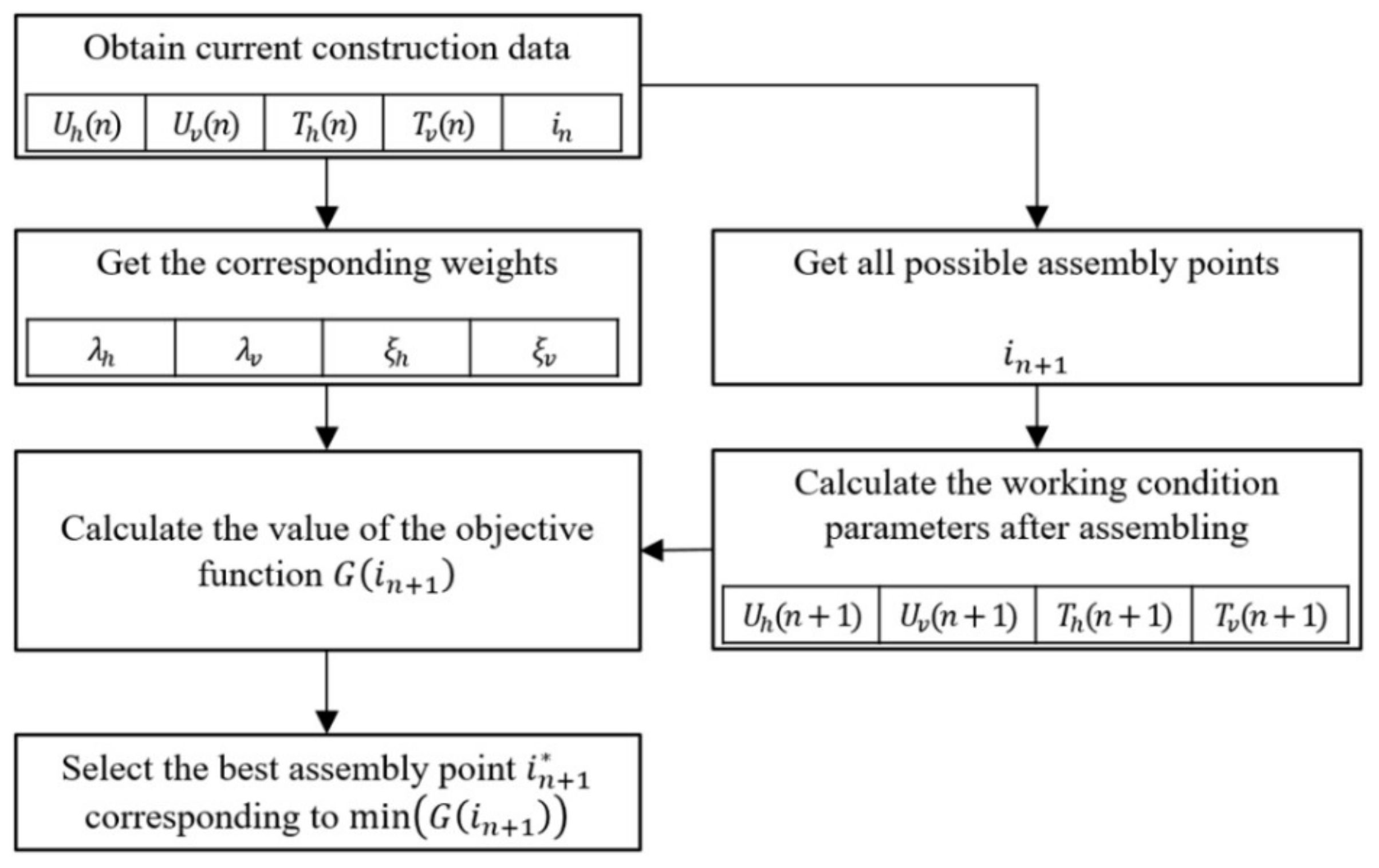
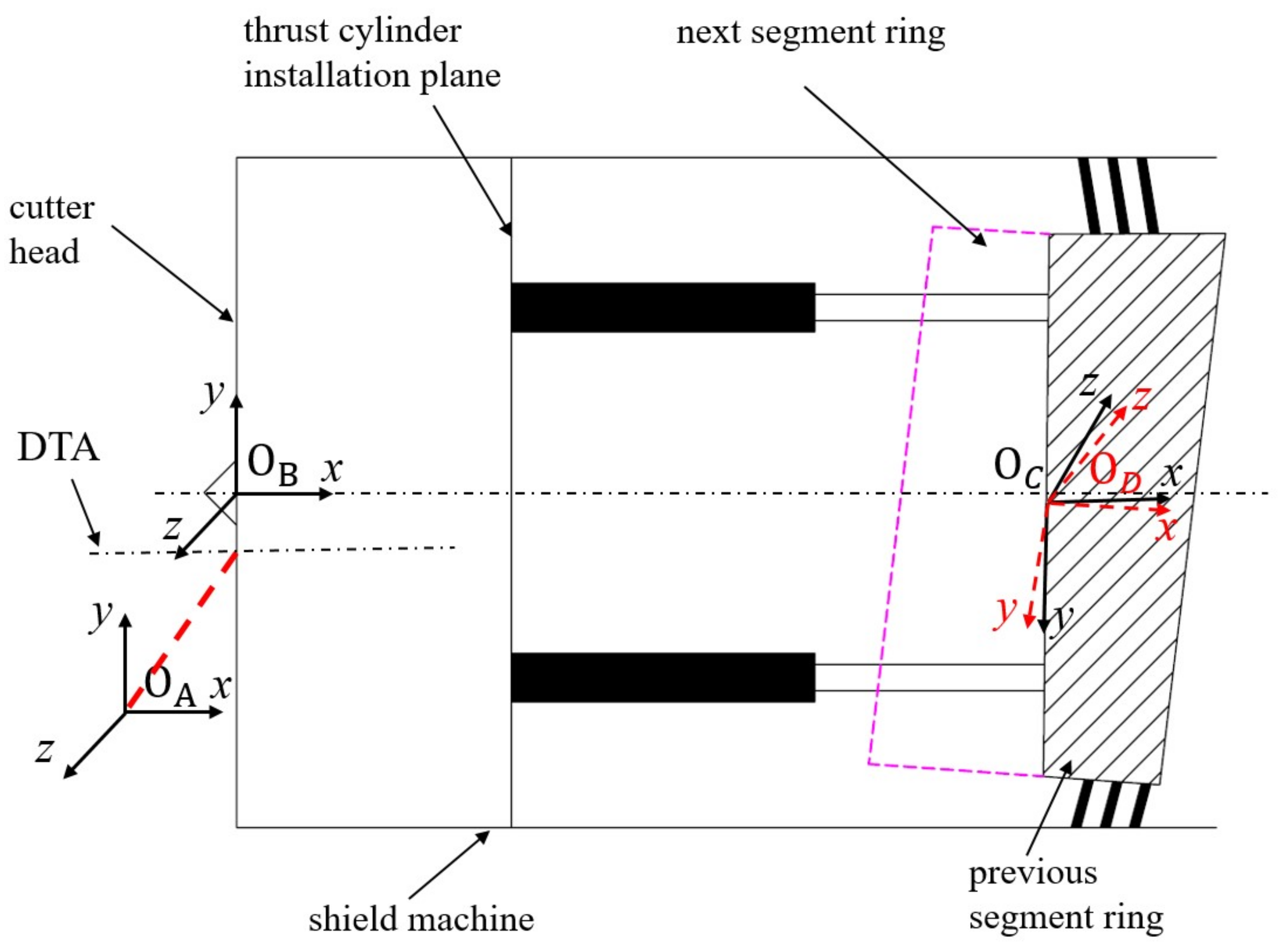
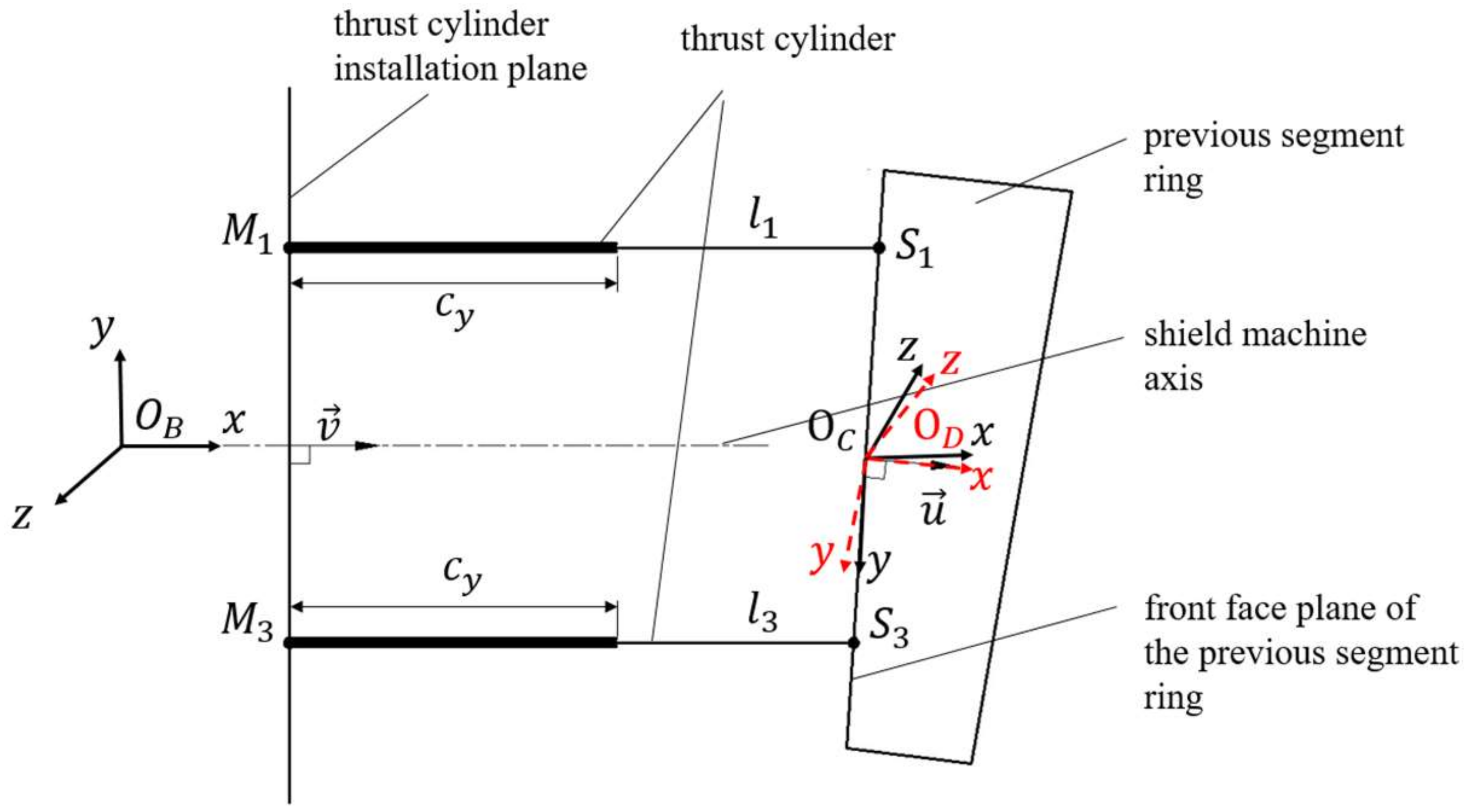

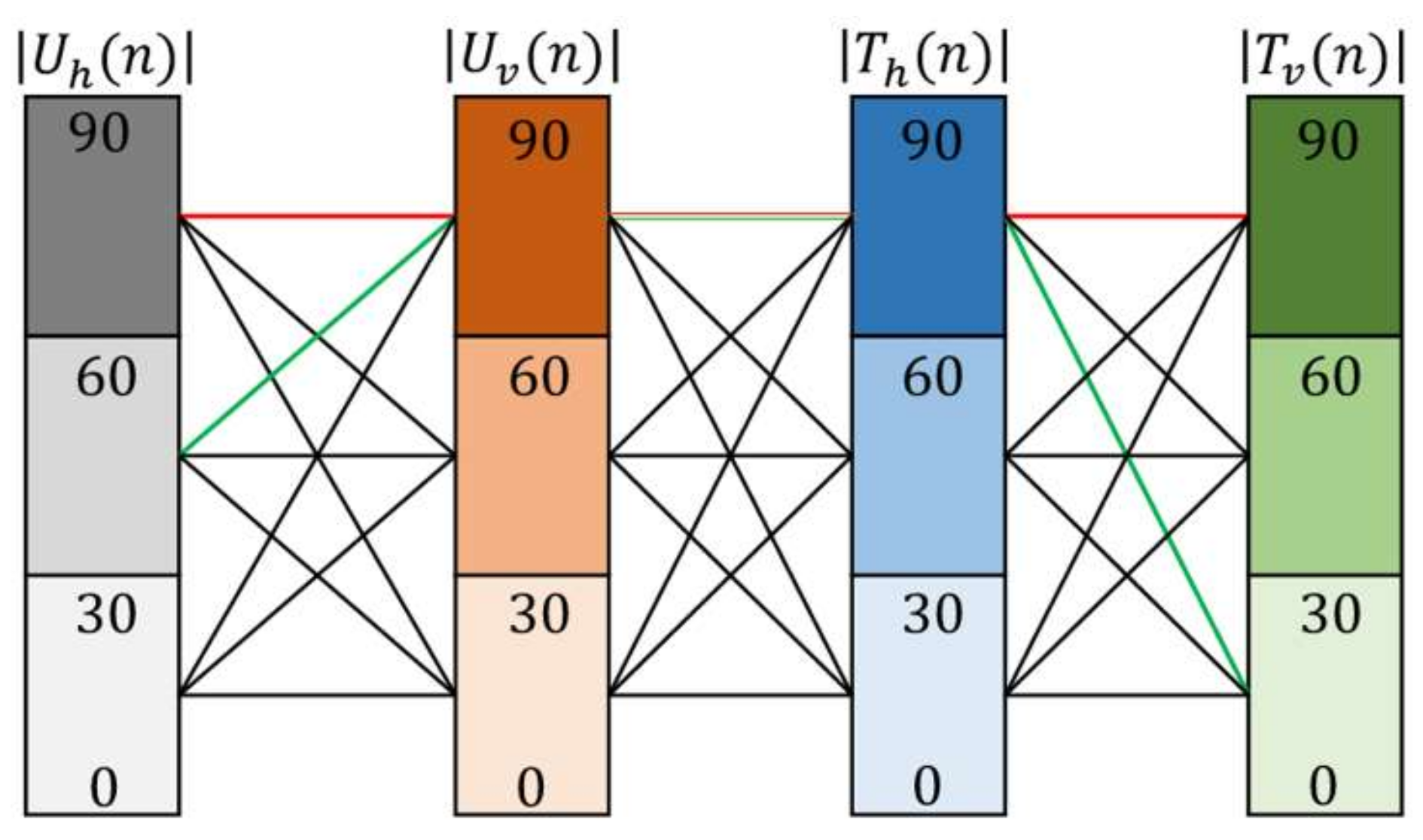


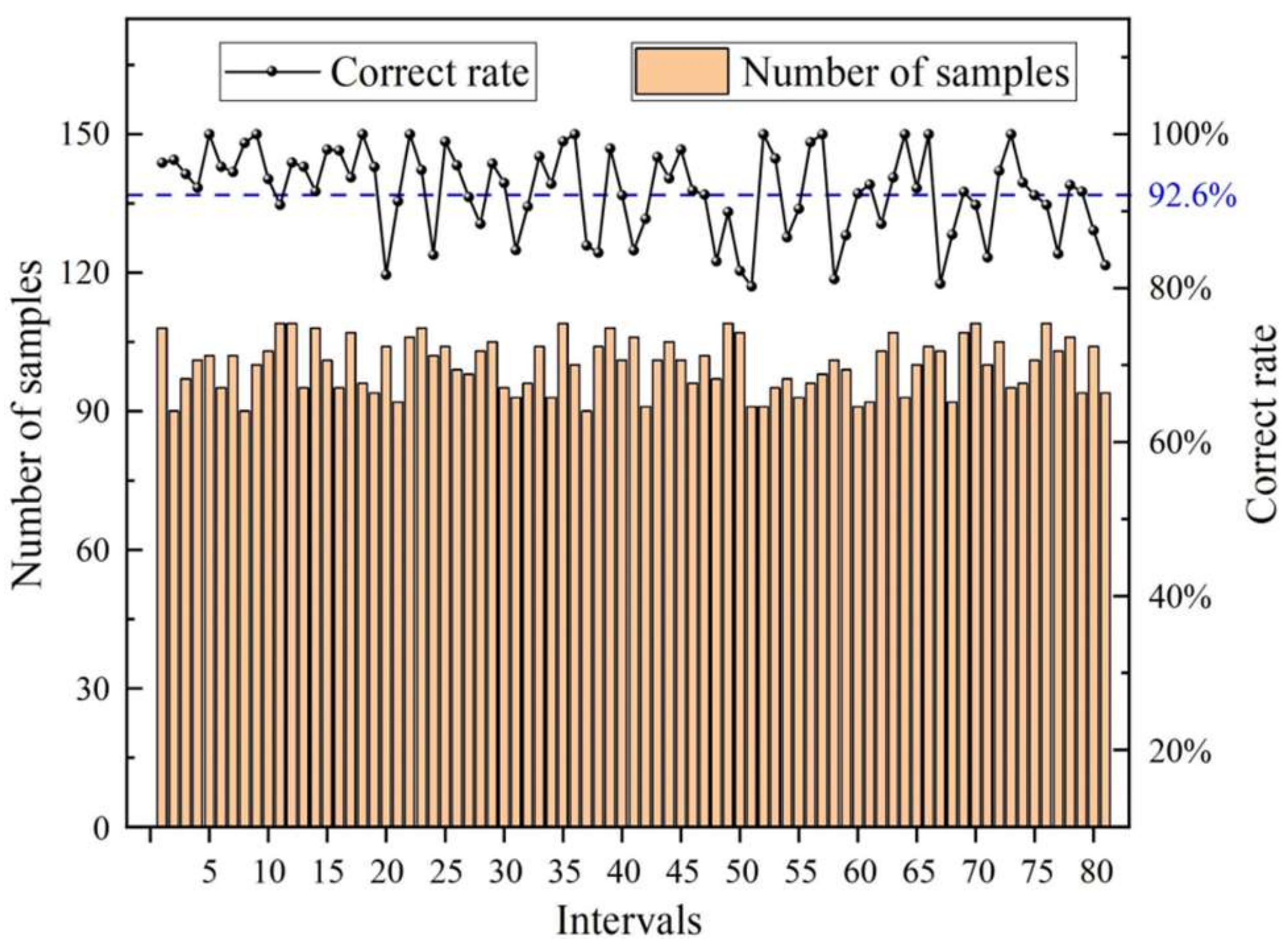
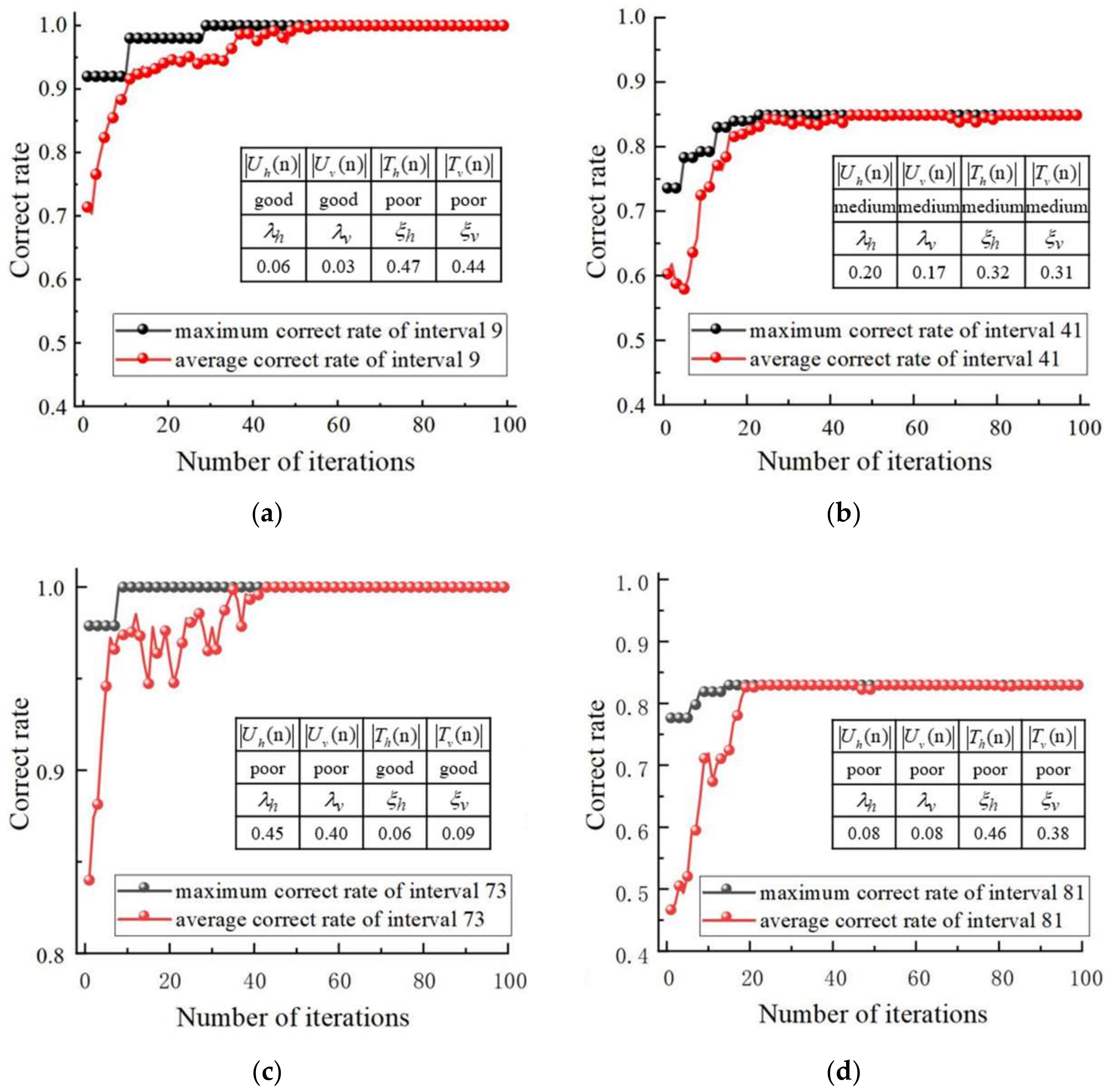
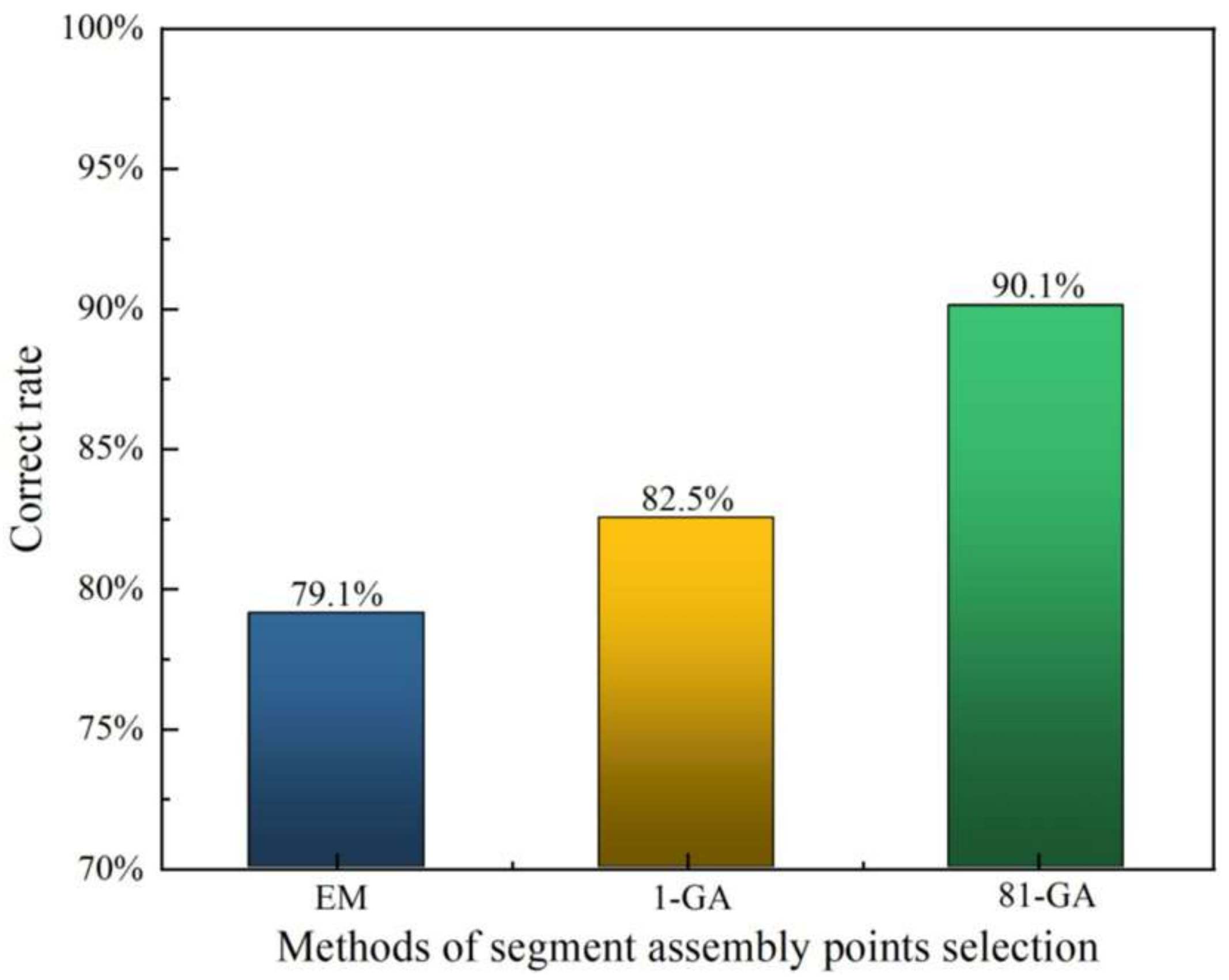
| Previous Segment Assembly Point | Next Segment Possible Assembly Point | ||||
|---|---|---|---|---|---|
| 1 | 3 | 6 | 9 | 12 | 15 |
| 2 | 4 | 7 | 10 | 13 | |
| 3 | 5 | 11 | 14 | 1 | |
| 4 | 6 | 9 | 12 | 15 | 2 |
| 5 | 7 | 10 | 13 | 3 | |
| 6 | 11 | 14 | 1 | 4 | |
| 7 | 9 | 12 | 15 | 2 | 5 |
| 9 | 11 | 14 | 1 | 4 | 7 |
| 10 | 12 | 15 | 2 | 5 | |
| 11 | 13 | 3 | 6 | 9 | |
| 12 | 14 | 1 | 4 | 7 | 10 |
| 13 | 15 | 2 | 5 | 11 | |
| 14 | 3 | 6 | 9 | 12 | |
| 15 | 1 | 4 | 7 | 10 | 13 |
| Parameters | Range of Values | Parameters | Range of Values |
|---|---|---|---|
| 0 | [6700, 6900] | ||
| [−50, 50] | [−50, 50] | ||
| [−50, 50] | [−50, 50] | ||
| [−3, 3] | |||
| [−1.5, 1.5] | [−3, 3] | ||
| [−1.5, 1.5] | [−3, 3] |
| Data Types | ||||||||||
|---|---|---|---|---|---|---|---|---|---|---|
| Manually labeled data | 20 | 70 | 10 | 10 | 2 | 7 | 5 | 35 | 3 | −18 |
| Converted horizontally | −20 | 70 | −10 | 10 | 14 | 9 | −5 | 35 | −3 | −18 |
| Converted vertically | 20 | −70 | 10 | −10 | 6 | 1 | 5 | −35 | 3 | 18 |
| Converted diagonally | −20 | −70 | −10 | −10 | 10 | 15 | −5 | −35 | −3 | 18 |
| Parameters | Description | Values |
|---|---|---|
| M | number of chromosomes in population | 30 |
| m | number of genes in a chromosome | 7 |
| MaxIter | maximum number of iterations | 100 |
| Pc | probability of crossover | 0.9 |
| Pm | probability of mutation | 0.05 |
| Ring Number | Drivers Checked Points | Actual Points | 81-GA Selected Points | |||
|---|---|---|---|---|---|---|
| Optional Point 1 | Optional Point 2 | Selected Points | Is an Optional Point | Selected Points | Is an Optional Point | |
| 1 | 5 | 1 | 5 | √ | ||
| 2 | 9 | 9 | √ | 9 | √ | |
| 3 | 7 | 11 | 11 | √ | 11 | √ |
| 4 | 6 | 3 | 6 | √ | ||
| 5 | 11 | 5 | 5 | √ | 5 | √ |
| 6 | 10 | 10 | √ | 10 | √ | |
| 7 | 12 | 12 | √ | 12 | √ | |
| 8 | 10 | 7 | 10 | √ | 7 | √ |
| 9 | 5 | 5 | √ | 5 | √ | |
| 10 | 7 | 7 | √ | 7 | √ | |
| 11 | 5 | 2 | 5 | √ | 2 | √ |
| 12 | 13 | 7 | 13 | √ | 13 | √ |
| 13 | 5 | 5 | √ | 2 | ||
| 14 | 3 | 13 | 13 | √ | 13 | √ |
| 15 | 2 | 2 | √ | 15 | ||
| 16 | 13 | 13 | √ | 13 | √ | |
| 17 | 11 | 2 | 11 | √ | 11 | √ |
| 18 | 6 | 3 | 6 | √ | 3 | √ |
| 19 | 4 | 4 | √ | 4 | √ | |
| 20 | 12 | 6 | 12 | √ | 9 | |
| 21 | 10 | 7 | 10 | √ | 7 | √ |
| 80 | 7 | 4 | 4 | √ | 7 | √ |
| 81 | 6 | 2 | 12 | 6 | √ | |
| 82 | 7 | 10 | 4 | 7 | √ | |
| 83 | 6 | 2 | 12 | 6 | √ | |
| 84 | 7 | 4 | 4 | √ | 7 | √ |
| 85 | 6 | 2 | 2 | √ | 6 | √ |
| 86 | 10 | 7 | 7 | √ | 10 | √ |
| 87 | 15 | 9 | 12 | 15 | √ | |
| 88 | 7 | 1 | 4 | 1 | √ | |
| 89 | 15 | 12 | 12 | √ | 15 | √ |
| 90 | 1 | 14 | 1 | √ | 14 | √ |
Publisher’s Note: MDPI stays neutral with regard to jurisdictional claims in published maps and institutional affiliations. |
© 2022 by the authors. Licensee MDPI, Basel, Switzerland. This article is an open access article distributed under the terms and conditions of the Creative Commons Attribution (CC BY) license (https://creativecommons.org/licenses/by/4.0/).
Share and Cite
Liu, R.; Hu, J.; Zhang, D.; Peng, D.; Zhu, G. Genetic Algorithm-Based Intelligent Selection Method of Universal Shield Segment Assembly Points. Appl. Sci. 2022, 12, 6926. https://doi.org/10.3390/app12146926
Liu R, Hu J, Zhang D, Peng D, Zhu G. Genetic Algorithm-Based Intelligent Selection Method of Universal Shield Segment Assembly Points. Applied Sciences. 2022; 12(14):6926. https://doi.org/10.3390/app12146926
Chicago/Turabian StyleLiu, Rui, Jinlong Hu, Dailin Zhang, Dandan Peng, and Guoli Zhu. 2022. "Genetic Algorithm-Based Intelligent Selection Method of Universal Shield Segment Assembly Points" Applied Sciences 12, no. 14: 6926. https://doi.org/10.3390/app12146926
APA StyleLiu, R., Hu, J., Zhang, D., Peng, D., & Zhu, G. (2022). Genetic Algorithm-Based Intelligent Selection Method of Universal Shield Segment Assembly Points. Applied Sciences, 12(14), 6926. https://doi.org/10.3390/app12146926






